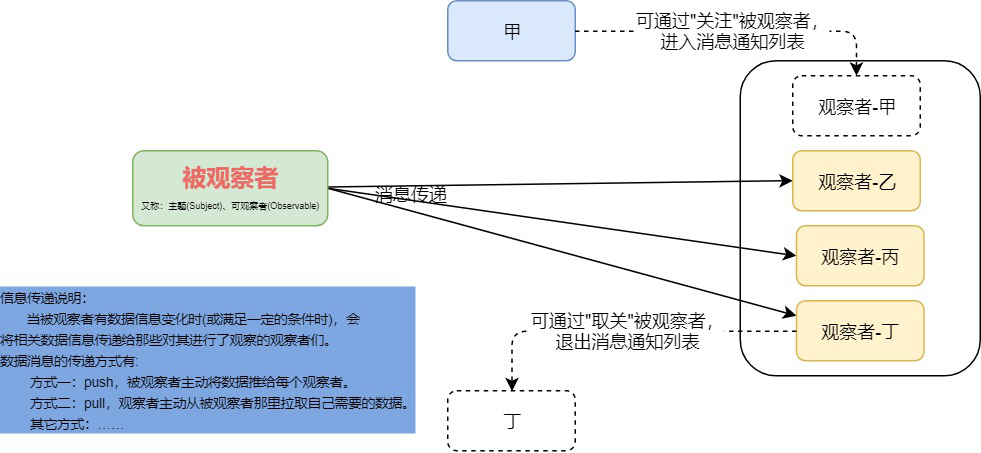iscsi多路径配置方式
学习一个服务的过程:
1、此服务器的概述:名字,功能,特点,端口号
2、安装
3、配置文件的位置
4、服务启动关闭脚本,查看端口
5、此服务的使用方法
6、修改配置文件,实战举例
7、排错(从下到上,从内到外)
内容:
•实战:配置IP SAN多路径实现磁盘挂载高可用
•实战:在应用服务器上使用udev规则为target创建固定名字的软链接
ISCSI多路径应用
如果存储服务器到交换机只有一条线路的时候,那么一条线路出线故障,整个就没法使用了,所以多线路可以解决这个问题,避免单点故障
通过VMware模拟多路径,使用下面的拓扑:
实验环境: 63,64配置双网卡 。
服务端:63.cn IP:192.168.1.63 ens32 ,br ; IP:192.168.2.63 ens35 , vmnet4
客户端:64.cn IP:192.168.1.64 ens32 ,br ; IP:192.168.2.64 ens35 , vmnet4
将63配置成ip san,将63上的sdb1分区,通过ip san 共享出去。
服务器端: target 63
客户端: initiator 64
配置网络环境:
xuegod63 添加一块网卡:
生成ens35配置文件,配置IP ,192.168.2.63
63 ~]# vim /etc/sysconfig/network-scripts/ifcfg-ens35

63 Desktop]# ifdown ens35;ifup ens35
安装tgtd服务器:
63 Desktop]# yum install -y scsi-target-utils
准备一个磁盘: sda4
63 ~]# fdisk /dev/sda #划分出sda4 分区WARNING: DOS-compatible mode is deprecated. It's strongly recommended toswitch off the mode (command 'c') and change display units tosectors (command 'u').Command (m for help): pDisk /dev/sda: 21.5 GB, 21474836480 bytes255 heads, 63 sectors/track, 2610 cylindersUnits = cylinders of 16065 * 512 = 8225280 bytesSector size (logical/physical): 512 bytes / 512 bytesI/O size (minimum/optimal): 512 bytes / 512 bytesDisk identifier: 0x000b8b35Device Boot Start End Blocks Id System/dev/sda1 * 1 26 204800 83 LinuxPartition 1 does not end on cylinder boundary./dev/sda2 26 1301 10240000 83 Linux/dev/sda3 1301 1428 1024000 82 Linux swap / SolarisCommand (m for help): nCommand actione extendedp primary partition (1-4)pSelected partition 4First cylinder (1428-2610, default 1428):Using default value 1428Last cylinder, +cylinders or +size{ K,M,G} (1428-2610, default 2610): +1GCommand (m for help): wThe partition table has been altered!Calling ioctl() to re-read partition table.WARNING: Re-reading the partition table failed with error 16: Device or resource busy.The kernel still uses the old table. The new table will be used atthe next reboot or after you run partprobe(8) or kpartx(8)Syncing disks.63 ~]#reboot
配置target ,把sda4分区共享出去
修改配置文件
vim /etc/tgt/targets.conf #写入以下内容在参考这段内容并在段内容后,追加以下红色标记内容:#<target iqn.2008-09.com.example:server.target4>76 # direct-store /dev/sdb # Becomes LUN 177 # direct-store /dev/sdc # Becomes LUN 278 # direct-store /dev/sdd # Becomes LUN 379 # write-cache off80 # vendor_id MyCompany Inc.81 #</target>为:<target iqn.2015-01.cn.xuegod.www:target_san1>backing-store /dev/sda4initiator-address 192.168.1.64initiator-address 192.168.2.64 #在访问控制列表中添加一个客户端vendor_id xuegodproduct_id target1</target>
注释:
default-driver iscsi #此配置文件默认全部注释,使用iscsi驱动
63 Desktop]#systemctl restart tgtd63 Desktop]# netstat -antup | grep 3260tcp 0 0 0.0.0.0:3260 0.0.0.0:* LISTEN 3130/tgtdtcp 0 0 :::3260 :::* LISTEN 3130/tgtd
查看状态tgt-admin —show
63 Desktop]# tgt-admin —show
Target 1: iqn.2015-01.cn.xuegod.www:target_san1System information:Driver: iscsiState: readyI_T nexus information:LUN information:LUN: 0Type: controllerSCSI ID: IET 00010000SCSI SN: beaf10Size: 0 MB, Block size: 1Online: YesRemovable media: NoReadonly: NoBacking store type: nullBacking store path: NoneBacking store flags:LUN: 1Type: diskSCSI ID: IET 00010001SCSI SN: beaf11Size: 5372 MB, Block size: 512Online: YesRemovable media: NoReadonly: NoBacking store type: rdwrBacking store path: /dev/sda4Backing store flags:Account information:ACL information: #允许哪些客户端可以访问192.168.1.64192.168.2.64
开机启动:
63 Desktop]# chkconfig tgtd on
配置客户端: 64
安装包:
64 ~]# rpm -ivh /mnt/Packages/iscsi-initiator-utils-6.2.0.872-34.el6.x86_64.rpm
需要先发现target存储,再启动客户端服务,才有效
64 ~]# iscsiadm -m discovery -t sendtargets -p 192.168.1.63:3260Starting iscsid: [ OK ] #发现时,会自动把iscsid服务启动192.168.1.63:3260,1 iqn.2015-01.cn.xuegod.www:target_san164 ~]#systemctl restart scsi # 根据/var/lib/iscsi/ 中发现的信息,识别设备Stopping iscsi: [ OK ]Starting iscsi: [ OK ]
开机自动启动:
64 ~]# systemctl enable iscsi64 ~]# systemctl enable iscsid
查看发现到新硬盘:
64 ~]# ls /dev/sdb/dev/sdb
在xuegod63服务端查看链接状态
63 ~]# netstat -antup | grep 3260tcp 0 0 0.0.0.0:3260 0.0.0.0:* LISTEN 1999/tgtdtcp 0 0 192.168.1.63:3260 192.168.1.64:46553 ESTABLISHED 1999/tgtdtcp 0 0 :::3260 :::* LISTEN 1999/tgtd
客户端从另一条线路发现设备:
64 ~]# iscsiadm -m discovery -t sendtargets -p 192.168.2.63192.168.2.63:3260,1 iqn.2015-01.cn.xuegod.www:target_san164 ~]# rpm -ivh /mnt/Packages/tree-1.5.3-2.el6.x86_64.rpm64 ~]# tree /var/lib/iscsi//var/lib/iscsi/├── ifaces├── isns├── nodes│ └── iqn.2015-01.cn.xuegod.www:target_san1│ ├── 192.168.1.63,3260,1│ │ └── default│ └── 192.168.2.63,3260,1│ └── default├── send_targets│ ├── 192.168.1.63,3260│ │ ├── iqn.2015-01.cn.xuegod.www:target_san1,192.168.1.63,3260,1,default -> /var/lib/iscsi/nodes/iqn.2015-01.cn.xuegod.www:target_san1/192.168.1.63,3260,1│ │ └── st_config│ └── 192.168.2.63,3260│ ├── iqn.2015-01.cn.xuegod.www:target_san1,192.168.2.63,3260,1,default -> /var/lib/iscsi/nodes/iqn.2015-01.cn.xuegod.www:target_san1/192.168.2.63,3260,1│ └── st_config
识别出硬盘并查看:
64 ~]# /etc/init.d/iscsi restartStopping iscsi: [ OK ]Starting iscsi: [ OK ]64 ~]# ls /dev/sd*/dev/sda /dev/sda1 /dev/sda2 /dev/sda3 /dev/sdb /dev/sdc
挂载硬盘测试数据:
64 ~]# fdisk /dev/sdb #使用sdb中所有空间,创建sdb1分区Device contains neither a valid DOS partition table, nor Sun, SGI or OSF disklabelBuilding a new DOS disklabel with disk identifier 0x337c0db1.Changes will remain in memory only, until you decide to write them.After that, of course, the previous content won't be recoverable.Warning: invalid flag 0x0000 of partition table 4 will be corrected by w(rite)WARNING: DOS-compatible mode is deprecated. It's strongly recommended toswitch off the mode (command 'c') and change display units tosectors (command 'u').Command (m for help): nCommand actione extendedp primary partition (1-4)pPartition number (1-4): 1First cylinder (1-1019, default 1):Using default value 1Last cylinder, +cylinders or +size{ K,M,G} (1-1019, default 1019):Using default value 1019Command (m for help): wThe partition table has been altered!Calling ioctl() to re-read partition table.Syncing disks.64 ~]# mkfs.ext4 /dev/sdb164 ~]# mount /dev/sdb1 /opt/64 ~]# df -hFilesystem Size Used Avail Use% Mounted on/dev/sda2 9.7G 3.7G 5.5G 41% /tmpfs 569M 0 569M 0% /dev/shm/dev/sda1 194M 28M 157M 15% /boot/dev/sr0 3.4G 3.4G 0 100% /mnt/dev/sdb1 5.0G 138M 4.6G 3% /opt
注:可以看到sdb1可以正常使用
64 ~]# ls /dev/sdc* #查看不到sdc1/dev/sdc64 ~]# /etc/init.d/iscsi restart #重启iscsi服务,重新挂载存储Stopping iscsi: [ OK ]Starting iscsi: [ OK ]64 ~]# ls /dev/sdc*/dev/sdc /dev/sdc164 ~]# mkdir /tmp/sdc164 ~]# mount /dev/sdc1 /tmp/sdc1/64 ~]# mount /dev/sdb1 /opt 挂载报错了吧?

[root@xuegod64 ~]# blkid /dev/sdc1 /dev/sdb1 # 对比一下,发现UUID一样的
解决方法:
64 ~]#mount -t xfs -o nouuid /dev/sdb1 /opt64 ~]# df -hFilesystem Size Used Avail Use% Mounted on/dev/sda2 9.7G 3.7G 5.5G 41% /tmpfs 569M 0 569M 0% /dev/shm/dev/sda1 194M 28M 157M 15% /boot/dev/sr0 3.4G 3.4G 0 100% /mnt/dev/sdc1 5.0G 138M 4.6G 3% /tmp/sdc1/dev/sdb1 5.0G 138M 4.6G 3% /opt
实例5: 在存储客户端xuegod64上配置多路径
多路径软件Device Mapper Multipath(DM-Multipath)可以将服务器节点和存储阵列之间的多条I/O链路配置为一个单独的设备。这些I/O链路是由不同的线缆、交换机、控制器组成的SAN物理链路。Multipath将这些链路聚合在一起,生成一个单独的新的设备。
1.DM-Multipath概览:
(1)数据冗余
DM-Multipath可以实现在active/passive模式下的灾难转移。在active/passive模式下,只有一半的链路在工作,如果链路上的某一部分(线缆、交换机、控制器)出现故障,DM-Multipath就会切换到另一半链路上。
(2)提高性能
DM-Multipath也可以配置为active/active模式,从而I/O任务以round-robin的方式分布到所有的链路上去。通过配置,DM-Multipath还可以检测链路上的负载情况,动态地进行负载均衡。
安装多路经软件
64 ~]# yum install device-mapper-multipath -y
使用默认配置文件启动
64 ~]# cp /usr/share/doc/device-mapper-multipath-0.4.9/multipath.conf /etc/64 ~]# systemctl restart multipathd64 ~]# multipath -ll #没有输出消息。 表示出错了。
解决:把正在使用中的sdb1和sdbc1卸载了
64 ~]# umount /opt/64 ~]# umount /tmp/sdc1/64 ~]# /etc/init.d/iscsi restart64 ~]# systemctl restart multipathd64 ~]# multipath -ll3600000000e00000000010001(远程存储设备id)dm-2 xuegod(厂商) ,target1(产品ID)size=5.0G features='0' hwhandler='0' wp=rw|-+- policy='service-time 0' prio=1 status=active #默认使用active的链路| `- 34:0:0:1 sdb 8:16 active ready running`-+- policy='service-time 0' prio=1 status=enabled #有效的链路,但不是活动链路`- 35:0:0:1 sdc 8:32 active ready running#默认配置并不会实现负载均衡,只会实现高可用的效果。# (3600000000e00000000010001) 远程存储设备的产品信息,由于sda和sdb对应的都是远端同一个存储,所以产品信息是一样的,最后被多路经驱动发现,所以为他们生成了一个设备文件/dev/mapper/mpatha# ll /dev/mapper/mpatha*lrwxrwxrwx 1 root root 7 1月 13 09:02 /dev/mapper/mpatha -> ../dm-2lrwxrwxrwx 1 root root 7 1月 13 09:02 /dev/mapper/mpathap1 -> ../dm-3
如图:
实战2:修改配置文件,启动高可用负载均衡模式,并自定义多路经设备文件的名字:
vim /etc/multipath.conf
注销掉下面三行内容
请在此模版下写内容:
在74行以下插入以下内容:
multipaths {multipath {wwid "360000000000000000e00000000010001" #填写硬盘产品关键信息alias webdata #自定义名字path_grouping_policy multibuspath_selector "round-robin 0"failback manualrr_weight prioritiesno_path_retry 5}}multipaths {multipath {wwid "360000000000000000e00000000010001" #填写硬盘产品关键信息alias webdata #自定义名字path_grouping_policy multibuspath_selector "round-robin 0"failback manualrr_weight prioritiesno_path_retry 5}}



































还没有评论,来说两句吧...